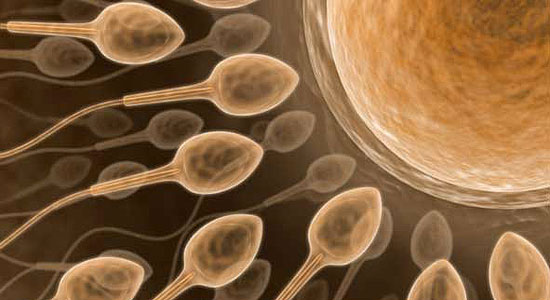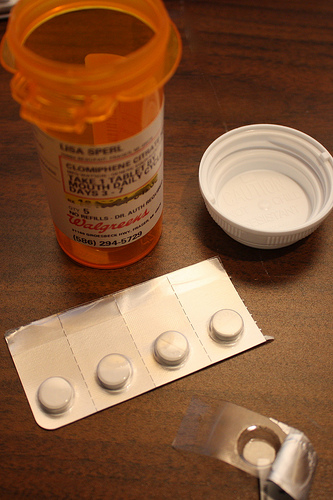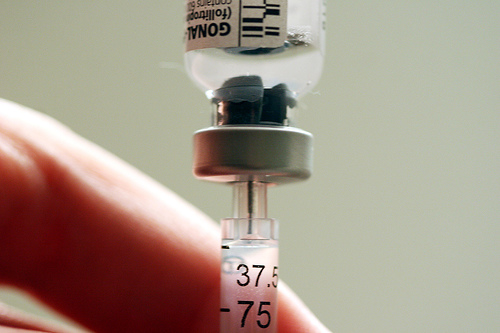Are you trying to conceive? Your fertile window may be very short, but if you follow the right steps, you might get pregnant in no time at all. Getting pregnant becomes much easier when you are healthy, understand your menstrual cycle, and get together at the right time. How?
Before you start trying to conceive
Evaluating your health and lifestyle before trying to conceive offers many benefits – to your general wellbeing, your fertility, and the healthy development of your baby once you get pregnant. Not everyone has the chance to eliminate bad habits and focus on their physical condition, eating habits, and mental health. According to many estimates, around half of all pregnancies were unplanned. If you and your partner have decided to start trying to get pregnant in the near future, you will have the advantage of creating the best possible physical environment for your baby before you conceive.

Perhaps looking at those aspects of your lifestyle that negatively impact your health and fertility, and bidding farewell to them, is the most obvious place to start. Smoking, for instance, decreases fertility in women who are trying to conceive, and can have extensive consequences for unborn babies. An increased chance of miscarriage, stillbirth, pre-term labor and low birth weight are among the possibilities. Smoking cigarettes is arguably the lifestyle choice that is most harmful.
Many women also choose to stop drinking alcohol and coffee or other caffeine-containing products like certain teas and cola. There is no lack of evidence that drinking large amounts of alcohol can harm a fetus, and some studies say that women who drink over eight cups of coffee daily have an increased risk of miscarriage. However, if you drink a glass of wine with your meal every once in a while, or drink a cappuccino occasionally, it is safe to assume no harm will come to you or the baby you are trying to get pregnant. The rationale of giving up these things while trying to conceive is that you could potentially be pregnant at any time.
 A healthy diet is very important for those trying to get pregnant. Healthcare providers universally recommend that women start taking a good quality prenatal supplement before they start trying. Deficiencies in vitamins and minerals can decrease fertility, and the early stages of pregnancy are crucial to fetal development. Folic acid is particularly important, since it can prevent neural tube defects such as spina bifida and anencephaly (where the developing baby has no brain). Starting on folic acid (at least 400 mcg daily) in the months before you actively try to get pregnant will ensure this B vitamin is in your system when you conceive.
A healthy diet is very important for those trying to get pregnant. Healthcare providers universally recommend that women start taking a good quality prenatal supplement before they start trying. Deficiencies in vitamins and minerals can decrease fertility, and the early stages of pregnancy are crucial to fetal development. Folic acid is particularly important, since it can prevent neural tube defects such as spina bifida and anencephaly (where the developing baby has no brain). Starting on folic acid (at least 400 mcg daily) in the months before you actively try to get pregnant will ensure this B vitamin is in your system when you conceive.
Cutting out fast foods (if you use them) and doing your best to eat foods from every major food group improves your fertility, and once again, promotes the proper development of your future baby. A diet rich in fresh fruits and vegetables, whole grains, and dairy products is optimal.

Exercising regularly and assessing whether you have a healthy weight and appropriate Body Mass Index (BMI) boosts your chances of getting pregnant, and will benefit mother and baby during the whole pregnancy and beyond. Women who are obese are at a higher risk of pregnancy complications like gestational diabetes, hypertension, and preeclampsia. Being in good physical shape makes for an easier pregnancy, and quicker postpartum recovery.
The biology of getting pregnant
At the risk of giving you flashbacks of your High School biology class, we’ll discuss the technical aspects of human fertilization in this chapter. In order for a woman to become pregnant, a female egg and male sperm have to merge. Usually, this happens after sexual intercourse and male ejaculation. In rarer cases, pregnancy can occur without intercourse (following mutual masturbation, for example), and after invitro fertilization. We will discuss fertility treatments later.

Ovulation takes place when a mature egg (and in some cases, multiple eggs) are released from an ovary. It then travels down to the fallopian tube, where it becomes available for fertilization. Ovulation takes place once during every menstrual cycle, and a female egg remains viable for a short window of time – 12 to 24 hours after being expelled from the ovary. For fertilization to be successful, sperm has to reach the egg within this period. The two fuse, and an embryo is created. For couples who are hoping to conceive, it is useful to remember that sperm has the capability of surviving inside the female body for up to five days. Reaching the viable egg takes some time, so having intercourse several days before ovulation as well as at the time of ovulation boosts the chances that you will get pregnant.
After an egg was successfully fertilized, it is a one-celled organism called a zygote. The future baby’s mother and father each contribute 23 chromosomes to the zygote, making a total of 46. The newly fertilized egg quickly starts dividing into additional cells, and will soon become an embryo. The brain, spine, and internal organs will begin to form. But before the embryonic stage is reached, the zygote needs to make its journey from the fallopian tubes to the uterus, where it will nestle into the optimal uterine lining that awaits it.
Understanding ovulation – when are you most fertile?
 As discussed in the previous section, the time period during which it is biologically possible for sperm to fuse with an egg is extremely limited. If you want to know how to get pregnant, understanding your menstrual cycle, and your most fertile days, is key. While couples who are not aware of the woman’s fertile periods are not at all unlikely to eventually get pregnant as long as they have regular unprotected intercourse, understanding ovulation increases the chances greatly. Thankfully, there are many ways in which women can gain insights into their cycle, and their ovulation. Note that many of the methods that you can use to find out when you are ovulating can easily be combined, thereby giving you an even bigger chance to determine your ovulation date. The methods to pinpoint ovulation include:
As discussed in the previous section, the time period during which it is biologically possible for sperm to fuse with an egg is extremely limited. If you want to know how to get pregnant, understanding your menstrual cycle, and your most fertile days, is key. While couples who are not aware of the woman’s fertile periods are not at all unlikely to eventually get pregnant as long as they have regular unprotected intercourse, understanding ovulation increases the chances greatly. Thankfully, there are many ways in which women can gain insights into their cycle, and their ovulation. Note that many of the methods that you can use to find out when you are ovulating can easily be combined, thereby giving you an even bigger chance to determine your ovulation date. The methods to pinpoint ovulation include:
- Using an ovulation calendar
While every woman is unique, menstrual cycles do tend to follow the same pattern. Ovulation calendars are simple but fairly accurate tools that use cyclical patterns to make a calculation to predict when ovulation is expected. The average woman’s menstrual cycle lasts 28 to 32 days, something that is measured from the day one menstruation began to the day the next starts. Ovulation occurs somewhere in between, and most usually between days 11 and 21 of their menstrual cycles. The luteal phase of your cycle refers to the time between ovulation and the next menstruation. The more information you have about your cycle – it’s length, when you previously ovulated, and how long your luteal phase lasts – the more probable that an ovulation calendar will correctly calculate the date of your ovulation.
- Ovulation predictor kits
Ovulation predictor kits are the single most precise tool available to determine exactly when a woman is ovulating. Like pregnancy tests, ovulation predictor kits work by determining if the relevant hormones are present in a urine sample. That means that the result is obtained by “peeing on a stick”, as it’s known in online fertility jargon. Ovulation predictor kits, also simply called ovulation tests, look for luteinizing hormone (LH). Ovulation is the only time during which LH is produced by the body, so a positive ovulation test is a very accurate indication that you are in fact ovulating. It is, however, possible to get a positive ovulation test and still be ovulating. Ovulation predictor kits are best used during the afternoon, when the levels of LH in urine reach a peak.
- Cervical mucus
It is also possible to use cervical mucus, the discharge produced by your cervix, to determine the time of ovulation. Cervical mucus varies throughout the menstrual cycle, and some women rely on monitoring it as their only method of knowing when they ovulate. Because cervical mucus is unique to an individual, it might be most helpful to monitor it in combination with ovulation predictor kits, an ovulation calendar, or measuring your temperature – at least until you “get to know” your own cervical mucus. As a rule, ovulatory cervical mucus is ample, looks similar to raw egg white, and is smooth. Ovulatory cervical mucus has a consistency that contributes to the ability of sperm to reach the egg. Later on in the cycle, during the luteal phase, mucus is more likely to be white, thick, and less “runny”.
- Body temperature
 Body temperature can be used to find out when you are at your most fertile. This method is commonly known as fertility charting, charting to conceive, or natural family planning. Those who are interested in this method to help them get pregnant sooner need to take their temperature at the same time every day, preferably when no physical activity has taken place in a while. Most women who use fertility charting set their alarm at a time early in the morning, record their temperature, and go back to sleep. This gives the most accurate results. A sudden spike in temperature indicates ovulation. It is possible to make your own records of measuring body temperature, but lots of women find it easier to use online fertility charting services that do all the hard work automatically. Such charting services can also record changes in cervical mucus, when you had intercourse, and more.
Body temperature can be used to find out when you are at your most fertile. This method is commonly known as fertility charting, charting to conceive, or natural family planning. Those who are interested in this method to help them get pregnant sooner need to take their temperature at the same time every day, preferably when no physical activity has taken place in a while. Most women who use fertility charting set their alarm at a time early in the morning, record their temperature, and go back to sleep. This gives the most accurate results. A sudden spike in temperature indicates ovulation. It is possible to make your own records of measuring body temperature, but lots of women find it easier to use online fertility charting services that do all the hard work automatically. Such charting services can also record changes in cervical mucus, when you had intercourse, and more.
- Physical ovulation symptoms
Finally, some women experience physical ovulation symptoms that enable them to know when they are fertile. These symptoms can include mild cramping or ovulation pain, ovulation bleeding, and more tender breasts. Because these symptoms are highly individual, and many women do not notice any ovulation symptoms at all, using these as a way of confirming you are ovulating is only possible if you regularly experience the same physical signs of ovulation.
Additional tips to boost your chances of conceiving
Having intercourse in the days before you expect to ovulate, and during ovulation, is the key to getting pregnant. The health steps we discussed at the beginning of this article can increase your fertility. Is there anything else that you can do to actively prove your chances of becoming pregnant?

Having intercourse regularly – not too often, and not too little – contributes to maintaining a man’s optimum sperm count during the time it matters most. A man’s sperm count decreases when he ejaculates multiple times a day, and not ejaculating for over a week also reduces the amount of sperm found in an ejaculate. Most couples will achieve the best sperm count if they have sex when the feel like it. Fertility specialists often say that two or three times a week is ideal for people who hope to conceive.
The missionary position gives sperm a head start – the closer to the cervix semen starts out, the less time will be needed for it to reach its final destination. That does not mean sex has to be boring. It is possible to get pregnant in almost any position, and to use the advantages of “man on top”, all you need to do is end up in that position when the man ejaculates. Some women additionally like to spend some time on their back, with a pillow under their buttocks, to give sperm the best chance to reach the waiting egg, and prevent it from “escaping”. While there is no scientific evidence that this method is effective, it will certainly not do any harm.
Mistakes that decrease the chances of getting pregnant
Just as your actions can increase your chances of conceiving, they can also harm your odds of conceiving. Knowing when you ovulate is the most relevant information that anyone can have. While the days prior to ovulation are included in a woman’s fertile women, and having intercourse before ovulation can result in a baby, this does not mean that having sex as often as possible during these days is the best approach to getting pregnant. Ejaculating multiple times a day reduces a man’s sperm count, and if you have a lot of sex in the days before ovulation, you might be missing out on the chance to conceive during the most important time; ovulation itself.
Using a lubricant is fine while you are trying to conceive, but check very carefully that it does not contain any spermicide. Many commercial lubricants do kill sperm, and that will obviously go a long way in preventing pregnancy.
Finally, stress can interfere with ovulation. The very process of trying to get pregnant (having timed intercourse, and big hopes for a positive pregnancy test every month) makes many women stressed. The daily stresses of life – work, financial worries, family issues – also contribute. Don’t ignore stress, and try to find time each day to relax. For some women, yoga and meditation are great stress relievers. Others prefer work outs, or discussing their feelings with their partner and friends.

One other common mistake that deserves mentioning is the thought that women should be the ones to make all the lifestyle changes when a couple is trying to conceive. Men are just as relevant to conceiving as women, and men should also quit smoking, and cut down on drinking alcohol and coffee, if relevant. Men who eat healthy diets are more fertile, just like women. Which brings us to
Health tips for men who want to become fathers
Men whose diets are rich in antioxidants, zinc, and folate (folic acid) actively increase both the concentration of sperm in their semen, and their sperm’s ability to reach the female egg. The same advice that we directed at women in the earlier portions of this article are also extremely helpful for men. Some men still think that it is the woman’s responsibility to know how to get pregnant. Examining their diets and lifestyle in much the same way as the typical woman does before trying to conceive can make the differences between conceiving and not conceiving, and multivitamin supplements are recommended for men too.

Heavy drinkers often have a low sperm count (oligozoosopermia), while men who smoke are likely to suffer from asthenozoospermia, or sperm that lacks the ability to effectively propel itself forward and reach its destination. Cutting out both smoking and drinking is recommended. Additionally, men who ejaculate several times a day might have a low sperm count, while those who do not ejaculate for longer than five days have the same problem. In short – men who want to have a baby are advised to stop indulging in unhealthy lifestyle habits, eat well, and have regular sex.
When to see a doctor
There are many reasons to see a doctor for couples who are trying to conceive, or want to start soon. Encountering problems getting pregnant is far from the only pretext to make an appointment with your doctor. We advise every couple who has decided to try for a baby – both men and women – to get a general medical checkup. Women can see their OB/GYN before trying to conceive.
 We also recommend every couple to strongly consider testing for sexually transmittable diseases. STD testing is a simple procedure. Couples who get the all-clear can rest assured that they are free from these diseases and can start trying to conceive. Those who do turn out to have a sexually transmitted disease can get treatment (often a simple course of antibiotics for many diseases, such as chlamydia) before trying for a baby. There is a wide range of STDs, but many of them have the potential to have extremely negative effects during pregnancy. Miscarriage, low birth weight, preterm labor, and perinatal mortality are among the many risks of various STDs. The embarrassment of getting yourself tested when you know you and your partner are monogamous is a small price to pay. Unless you get tested, you don’t know for sure if you have a sexually transmitted disease.
We also recommend every couple to strongly consider testing for sexually transmittable diseases. STD testing is a simple procedure. Couples who get the all-clear can rest assured that they are free from these diseases and can start trying to conceive. Those who do turn out to have a sexually transmitted disease can get treatment (often a simple course of antibiotics for many diseases, such as chlamydia) before trying for a baby. There is a wide range of STDs, but many of them have the potential to have extremely negative effects during pregnancy. Miscarriage, low birth weight, preterm labor, and perinatal mortality are among the many risks of various STDs. The embarrassment of getting yourself tested when you know you and your partner are monogamous is a small price to pay. Unless you get tested, you don’t know for sure if you have a sexually transmitted disease.
Couples who are under 35 and have been trying to conceive (having regular intercourse without contraceptives, preferably timed around ovulation) for a year are advised to make a fertility appointment. The same holds true for couples over 35 who have been attempting to get pregnant for six months.
Men and women who are aware of pre-existing fertility problems and who want to get pregnant, or need advice on how to get pregnant with their particular conditions, also need to see a doctor – usually a reproductive endocrinologist or fertility specialist. Examples of female conditions that require medical attention or monitoring are polycystic ovary syndrome (PCOS), endometriosis, or a bicornuate (heart-shaped) uterus. Men who have sperm delivery problems, due to a blocked vas deferens for instance, those with a varicocele (enlarged veins in the scrotum), or any other known obstacle to getting their partner pregnant, should also seek medical attention.
Ways to get pregnant (fertility treatments)
The vast majority of couples start out expecting to conceive naturally, and most will succeed. But thankfully, modern technology and medicine does offer many opportunities and the hope to get pregnant to people who are unable to get pregnant naturally for whatever reason. Whether you have been trying to get pregnant for a long time without success, and have been diagnosed with idiopathic (unexplained) infertility, or are infertile and are aware of the underlying cause, one of the many fertility treatments now available might assist you in having the baby you are dreaming about. Assisted fertility techniques are also a viable way to have a baby for gay and lesbian couples, or single mothers by choice. This is an overview of fertility treatments, and who can benefit from them.
Fertility medication
Fertility drugs are the first step for many people who have trouble conceiving naturally. Women who are anovulatory (do not ovulate) frequently get prescribed Clomid, generically called Clomiphene, to induce ovulation. This drug is highly effective. Gonadotropins are another class of fertility medications that is widely used. Brand names include Pergonal, Gonal F, and Pregnyl. These drugs can be useful for women who did not respond to Clomid, those with PCOS, a luteal phase defect, or idiopathic infertility. Additionally, gonadotropins are also prescribed to men whose infertility is caused by a hormonal imbalance. Fertility medication is also used in combination with many of the fertility treatments discussed below, in order to increase the success rates and sometimes as a prerequisite for success.

Intravaginal insemination (IVI)
Intravaginal insemination or IVI is the simplest and most low-tech form of fertility intervention. It is often referred to just as insemination or artificial insemination. With IVI, semen is placed directly into the vagina with a syringe. This procedure is suitable for men who are unable to ejaculate during intercourse but have no fertility problems, women who have vaginisumus and cannot have sexual intercourse, and for women who are hoping to conceive with donor sperm. This form of insemination is likely to be successful in combination with a healthy sperm count and no other sperm abnormalities, and the woman being inseminated is ovulating. It can be carried out in a fertility clinic or at home through self-insemination.
Intrauterine insemination (IUI)
During intrauterine insemination or IUI, perviously analyzed sperm prepared through a procedure called sperm washing is inserted directly into the uterus. IUI is often suitable for couples who have unexplained infertility. It can also be successful in cases of male factor infertility, in combination with a low sperm count or where sperm has motility or morphology abnormalities. During sperm washing, sperm of substandard quality is separated from healthy sperm and eliminated. Women who are not ovulating can benefit from IUI in combination with ovulation-inducing medications like Clomid, as can those who have mild endometriosis. Although intrauterine insemination can be effective during natural cycles if the woman is ovulating normally, it is most frequently used together with fertility drugs.
Invitro fertilization (IVF)
IVF is without a doubt the most well-known and most talked about fertility treatment. It has been used successfully for over 30 years now, but for many people there is still something magical about the fact that embryos can be created in a petri-dish! Fertility medications to stimulate the release of as many eggs as possible in women are routinely used for IVF patients. After eggs are retrieved from the female body, they are fertilized outside of the body, and subsequently transferred to the uterus. “In vitro” is Latin for “in glass”.

How do you know if you are a suitable candidate for IVF? A long process of fertility testing and and trying other fertility treatments like IUI often precedes before someone arrives at IVF, but not always. IVF can be used for women with ovulatory problems, blocked or scarred fallopian tubes or no tubes, pelvic inflammatory disease, PCOS, endometriosis, and others. Male factor infertility can also be a reason for IVF.
Intracytoplasmic sperm injection (ICSI)
ICSI is a variation of invitro fertilization that involves the direct injection of a single sperm into the center of an egg. It is most suitable for couples where the man has a very low sperm count, poor sperm quality, or sperm that moves slowly or cannot penetrate an egg. In some cases, men who have sperm delivery problems can have sperm directly extracted from the scrotum in small quantities. ICSI is a viable option in such situations. For the female partner, the procedure of an intracytoplasmic sperm injection does not differ from regular IVF.

